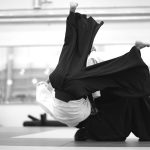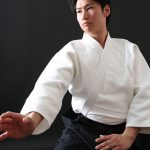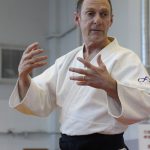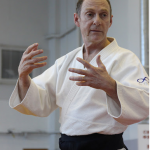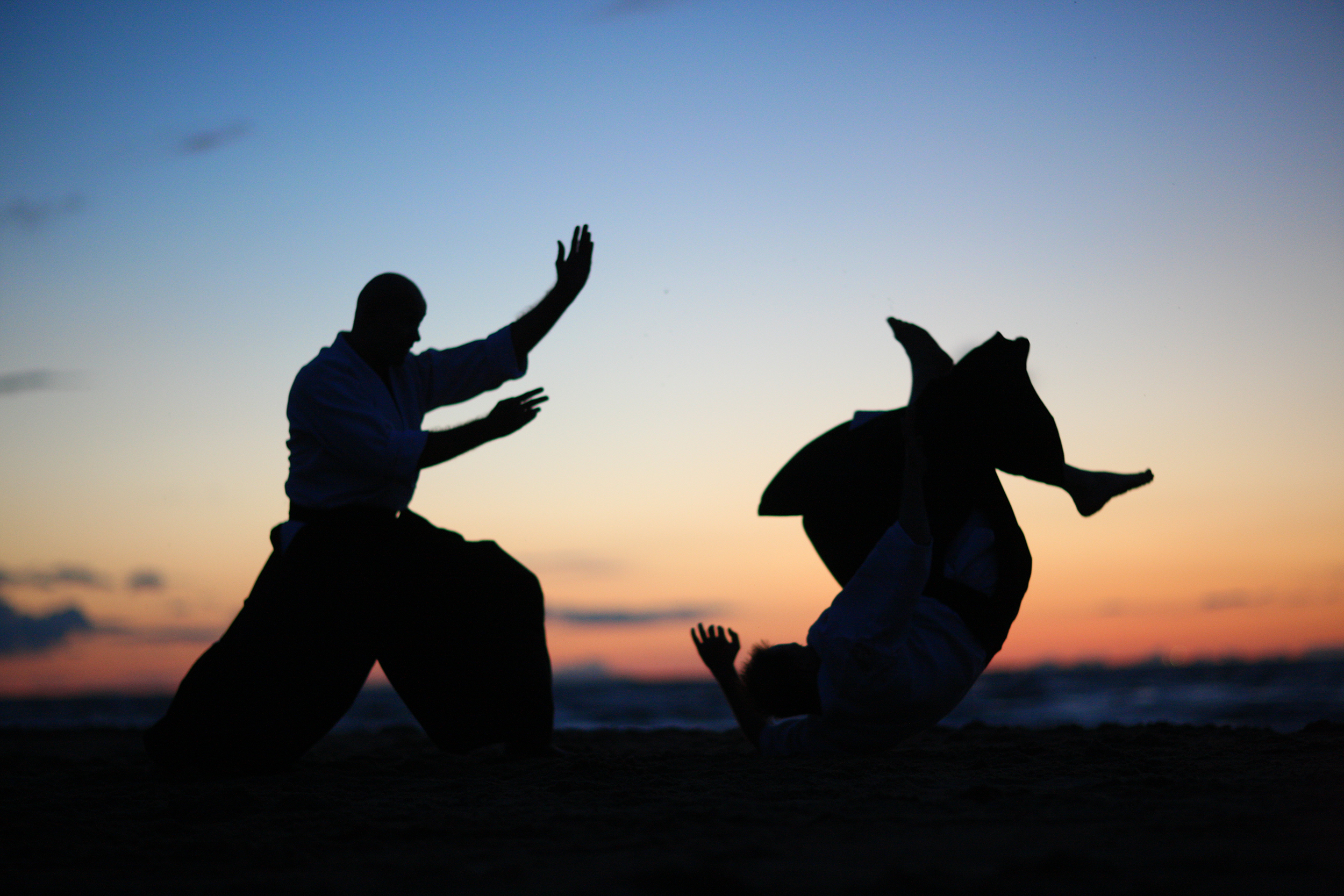
This article is a translation of an essay by Tachibana Tatsunari-san, he works for Tozando and practices Yoshinkan Aikido and is currently 5-dan. In his essay he explores “kamae” – posture or stance – in training and why it is emphasised so strongly in Yoshinkan Aikido.
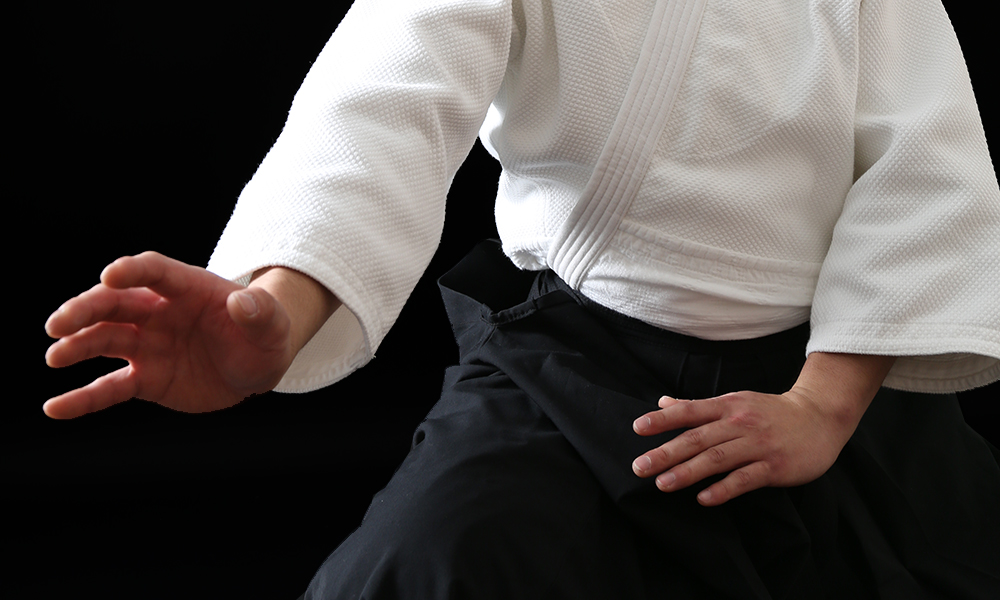
In Yoshinkan Aikido, as soon as you begin you will perform training known simply as kamae. There is an established entry regarding “kamae” in the instructional texts supervised by the foudner Ueshiba Morihei and his son, the second generation doshu of the hombu dojo Kisshomaru, so this sort of “kamae” training in Aikido is not unique to Yoshinkan I think.
From the day I began my training, I was taught to emphasise and focus on “kamae“, but I kept thinking to myself “Why must we practice our posture to such an extent?” When I asked my teacher, all he said was as follows.
“Aikido is…your capacity to breath…and the strenght of your centre…”.
To a complete novice such as myself I couldn’t really grasp the concepts of breathing (kokyu) and my centre (chushin). Having guessed my predicament, that Sensei went on to show me an article to help me understand.
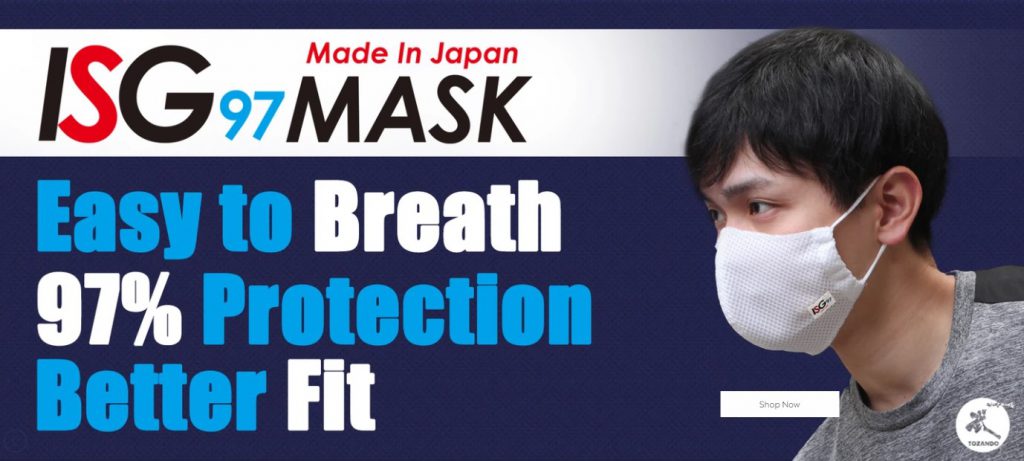
That article was a record of a discussion by Yoshinkan’s founder, Shioda Gozo Sensei as he was known to have a great interest in the subject of one’s own breathing. though I rely on my memory, I will introduce the contents below.
When it comes to the strength of your breathing, it isn’t a power that comes from your muscle, it is a power that naturally springs forth when you match your partner. There is a rhythm to it.
If you can skillfully align your own breathing and power of your centre with the breathing of your opponent, then regardless of the situation you find yourself you can respond and apply a technique.
When it comes to breathing you can split it up into three principal types:
1. Inhalation – applied when you are inviting your partner
2. Exhalation – applied when you release all of your power
3. Holding – applied when you want to instantly gather force
The power of the centre is the strength of your centre line. The basis of Aikido is the preservation of the axis that binds your head, hips and feet together. Wherever your dojo or practice is, in order to perform smooth and flowing Aikido it is important to have an unwavering centre line.
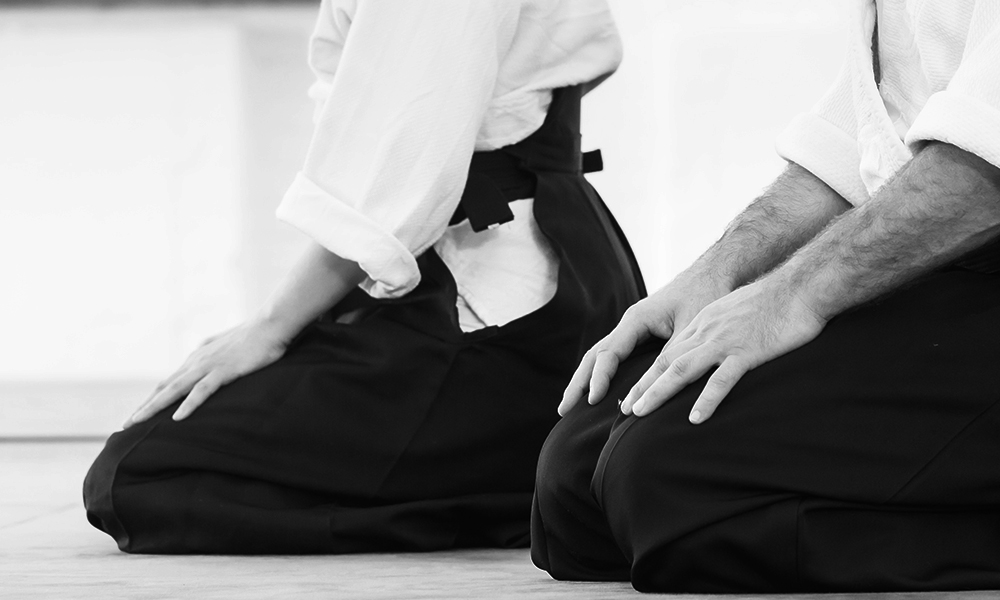
As we can see from the above, to improve in Aikido the relationship between breathing and the strength of your centre becomes an important point to consider. It is for this reason that kamae training is so emphasised in Yoshinkan Aikido.
It is simple to understand this on face value, but to actually apply it is extremely difficult don’t you think? This is because setting out with the intention “Let’s try and perform techniques like this.” without plenty of basic practice is impetuous: it is often the case that your breathing and movements become misaligned and you collapse your own posture.
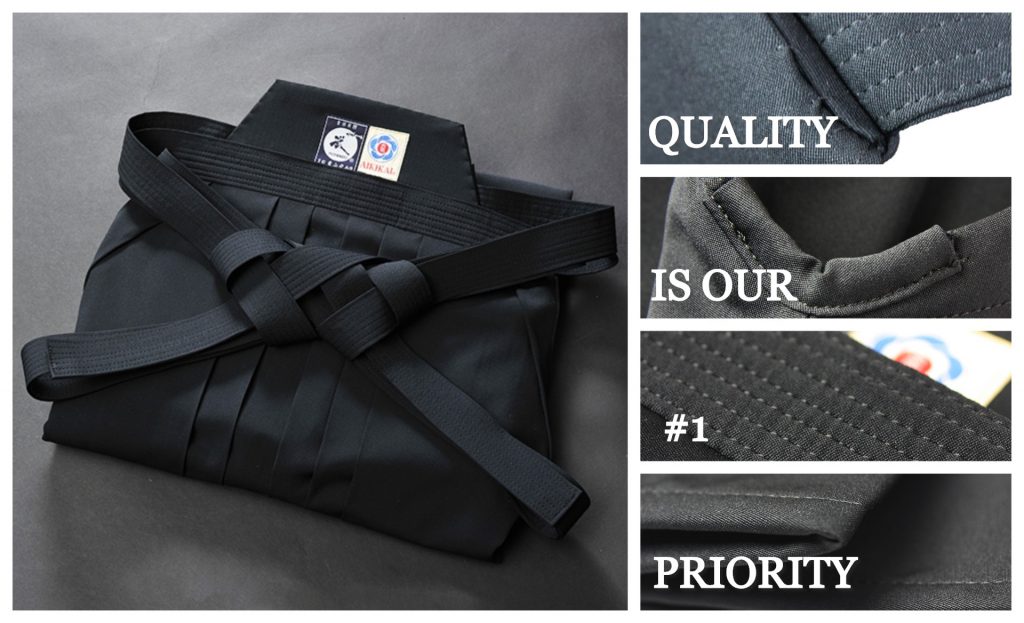
Don’t you think that the element that connects both your breathing and centre is actually ki? I think that the awesome skill of sensei known as masters, like Shioda Gozo Sensei, is derived from tapping into this spirituality. When he was being posted to the front he is quoted as saying:
Wherever you may go it is a good thing to hone your qualities.
I feel that the pursuit of heighten your spirituality, whether that is in budo or in life, is something very important.
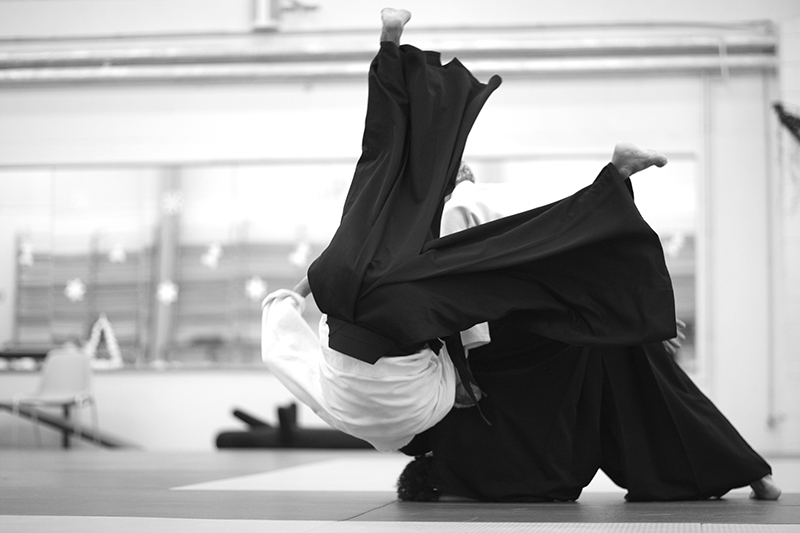
Yoshinkan’s “yoshin” can be interpreted as “fostering your spirit”. It is derived from an excerpt found in a old chinese text called the Caigentan from around 1590. The phrase can be loosely translated as:
Guard against foolishness and without wavering, cultivate your spirit and humility.
I too want to pursue enjoyable and fulfilling Aikido whilst tirelessly cultivating my spirit.
by Tachibana Tatsunari, Yoshinkan Aikido 5-dan
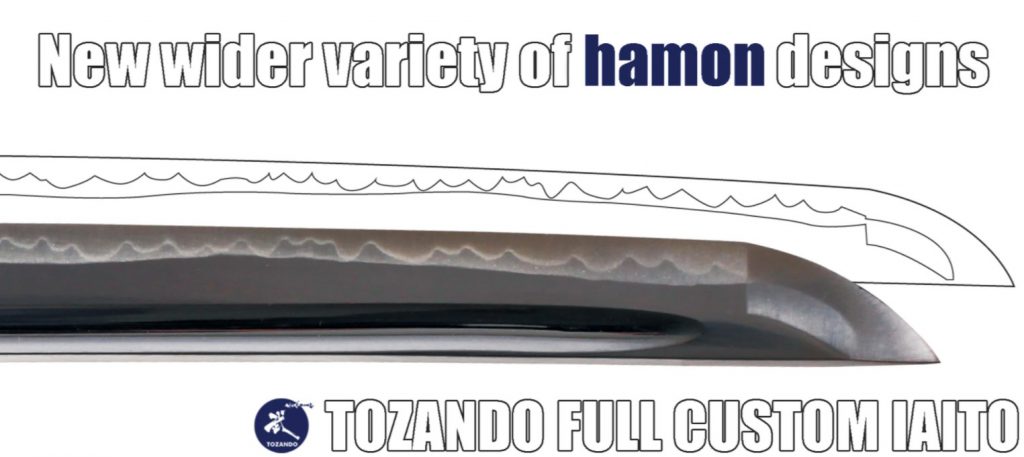
 | Did you like what you've just read? Check this out. |



